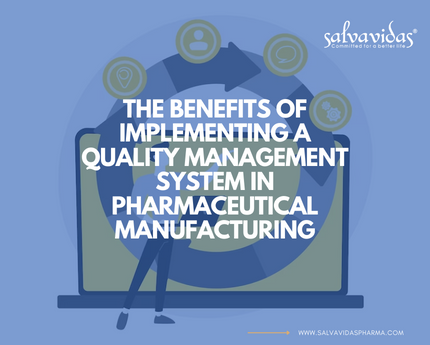
The Role of Employee Training in Pharmaceutical Manufacturing and Export in India Introduction: The pharmaceutical industry in India is a vital sector that plays a significant role in the country’s economy. The industry is known for its high-quality products and excellent standards, making it a hub for pharmaceutical manufacturing and export. However, with the rapid changes in technology, increasing competition, and evolving regulations, it is essential to invest in employee training. This article will explore the importance of employee training in the pharmaceutical manufacturing and export industry in India. Headings: The Benefits of Employee Training in Pharmaceutical Manufacturing and Export in India Common Challenges in Employee Training in Pharmaceutical Manufacturing and Export in India Best Practices for Employee Training in Pharmaceutical Manufacturing and Export in India The Benefits of Employee Training in Pharmaceutical Manufacturing and Export in India Investing in employee training can bring a range of benefits to pharmaceutical companies in India, such as: Increased Productivity: A well-trained workforce is likely to be more productive, resulting in higher quality and more efficient production. Compliance with Regulations: The pharmaceutical industry is highly regulated, and investing in training can help ensure that employees are aware of the latest regulations and follow them correctly. Improved Safety: The pharmaceutical manufacturing process involves handling hazardous materials, and training can help reduce the risk of accidents and injuries. Cost Savings: Effective training can reduce waste, minimize errors, and optimize processes, resulting in cost savings for the company. Common Challenges in Employee Training in Pharmaceutical Manufacturing and Export in India Despite the many benefits of employee training, some challenges can hinder its success, such as: High Costs: Providing high-quality training can be expensive, and some companies may struggle to justify the cost. Time Constraints: Manufacturing and exporting pharmaceutical products requires meeting strict deadlines, which can leave little time for training. Language Barriers: India has many languages, and some employees may not speak the language in which the training is provided, making it challenging to understand. Best Practices for Employee Training in Pharmaceutical Manufacturing and Export in India To ensure successful employee training in the pharmaceutical industry in India, companies can adopt the following best practices: Develop a Comprehensive Training Plan: A well-planned training program that addresses all the company’s needs can ensure that the employees are adequately trained. Incorporate Interactive Learning: Incorporating interactive learning activities, such as group discussions and hands-on training, can make the training more engaging and effective. Use Technology: E-learning modules, virtual reality, and augmented reality can make training more engaging, cost-effective, and efficient. Provide Multilingual Training: Providing training in multiple languages can ensure that all employees can understand and benefit from the training. FAQs: Q. How often should employee training be conducted in the pharmaceutical industry in India? A. Employee training should be conducted regularly to keep up with the changing regulations and technologies. The frequency of training can vary depending on the company’s needs and the employee’s roles. Q. How can companies measure the effectiveness of their training programs? A. Companies can measure the effectiveness of their training programs by conducting assessments and evaluations of the employee’s skills and knowledge. They can also track productivity, safety, and other relevant metrics to measure the impact of the training. Conclusion: The pharmaceutical manufacturing and export industry in India is highly competitive and rapidly evolving. Investing in employee training is crucial for ensuring compliance, safety, efficiency, and quality. While there are challenges to employee training, adopting best practices, such as developing a comprehensive plan, incorporating interactive learning, using technology, and providing multilingual training, can help ensure its success. Pharmaceutical companies in India that invest in employee training can reap the benefits of increased productivity, cost savings, and compliance with regulations, among other advantages. With a well-planned and effective training program, companies can ensure that their workforce is prepared to meet the demands of the industry and remain competitive in the global market. Therefore, it is essential to recognize the vital role of employee training in the pharmaceutical industry and invest in it accordingly to ensure continued success in the field.

The Benefits of Implementing a Quality Management System in Pharmaceutical Manufacturing Introduction: The pharmaceutical industry has a critical responsibility to manufacture high-quality products that are safe for consumption. Implementing a Quality Management System (QMS) can help manufacturers maintain the quality of their products by adhering to regulatory requirements and improving production processes. This article discusses the benefits of implementing a QMS in pharmaceutical manufacturing. What is a Quality Management System? The Importance of Implementing a QMS in Pharmaceutical Manufacturing Benefits of Implementing a QMS in Pharmaceutical Manufacturing How to Implement a QMS in Pharmaceutical Manufacturing Frequently Asked Questions (FAQs) Conclusion What is a Quality Management System? Definition of QMS Components of a QMS The Importance of Implementing a QMS in Pharmaceutical Manufacturing Compliance with Regulatory Requirements Improved Product Quality and Safety Increased Efficiency Competitive Advantage Benefits of Implementing a QMS in Pharmaceutical Manufacturing Consistent Product Quality Enhanced Customer Satisfaction Improved Risk Management Increased Employee Engagement Cost Savings How to Implement a QMS in Pharmaceutical Manufacturing Identify Quality Objectives Develop Quality Policies and Procedures Establish a Quality Manual Provide Employee Training Perform Internal Audits Continually Improve the QMS Frequently Asked Questions (FAQs) What is the difference between a QMS and a Quality Assurance System? Who is responsible for implementing a QMS in pharmaceutical manufacturing? What are the consequences of non-compliance with regulatory requirements? Conclusion: The implementation of a Quality Management System in pharmaceutical manufacturing is essential to ensure consistent product quality, comply with regulatory requirements, and enhance customer satisfaction. By following the steps to implement a QMS and continually improving it, manufacturers can reap the benefits of improved efficiency, risk management, and cost savings. Bullet Points: Benefits of Implementing a QMS in Pharmaceutical Manufacturing: Consistent product quality Enhanced customer satisfaction Improved risk management Increased employee engagement Cost savings FAQs: Q: What is the difference between a QMS and a Quality Assurance System? A: A QMS is a comprehensive system that encompasses all aspects of a company’s operations, while a Quality Assurance System focuses on ensuring product quality. Q: Who is responsible for implementing a QMS in pharmaceutical manufacturing? A: The responsibility for implementing a QMS lies with the company’s management, with the involvement of all employees. Q: What are the consequences of non-compliance with regulatory requirements? A: Non-compliance with regulatory requirements can result in fines, product recalls, and damage to a company’s reputation. Conclusion: In conclusion, implementing a Quality Management System in pharmaceutical manufacturing is crucial to ensuring consistent product quality, complying with regulatory requirements, and enhancing customer satisfaction. By following the steps to implement a QMS and continually improving it, manufacturers can reap the benefits of improved efficiency, risk management, and cost savings. The benefits of implementing a QMS are significant and cannot be overlooked in today’s competitive market.

The Future of Gene Therapy in India Introduction: Gene therapy, a promising field of biotechnology, has the potential to cure genetic disorders by replacing, removing, or repairing faulty genes. It is a relatively new approach, and India has not been left behind in the quest to harness its potential. With the rise of biotech industries, research institutions, and the emergence of a supportive regulatory framework, gene therapy in India is poised to grow. This article explores the current state of gene therapy in India, its challenges, and future prospects. Current State of Gene Therapy in India: Gene therapy in India is still in its infancy, with only a few clinical trials conducted on humans. However, with the emergence of a supportive regulatory framework, India has the potential to grow in the field. In 2018, the Central Drugs Standard Control Organization (CDSCO) under the Ministry of Health and Family Welfare, India, released a draft guideline for gene therapy products. The guideline, aimed at regulating the production and marketing of gene therapy products, has made it easier for researchers to conduct clinical trials and bring gene therapy products to the market. Advancements in Gene Therapy in India: Despite being in its early stages, gene therapy in India has witnessed significant advancements. The following are some of the promising developments in the field: Treatment for genetic eye disorders: Recently, a group of Indian scientists developed a gene therapy for treating a rare genetic eye disorder. The treatment involves injecting a harmless virus into the eye, which delivers a healthy copy of the faulty gene. Use of gene editing: Indian scientists have also been exploring the potential of gene editing in treating genetic disorders. The development of the CRISPR-Cas9 gene editing system has made it easier for scientists to alter and repair faulty genes. Stem cell therapy: Stem cell therapy, a branch of regenerative medicine, has also been used in India to treat genetic disorders. The therapy involves the transplantation of healthy stem cells into the body to replace damaged cells. Challenges of Gene Therapy in India: Although gene therapy in India is growing, it still faces several challenges, including: High costs: Gene therapy is an expensive treatment, and many patients in India may not be able to afford it. Lack of skilled workforce: Gene therapy requires a highly skilled workforce, and India currently faces a shortage of skilled professionals in the field. Regulatory challenges: Although the regulatory framework has improved, some challenges remain, such as the time taken for regulatory approvals and the lack of clarity on intellectual property rights. Frequently Asked Questions (FAQs): Q: What is gene therapy? A: Gene therapy is a treatment that involves replacing, removing, or repairing faulty genes to cure genetic disorders. Q: Is gene therapy available in India? A: Gene therapy is still in its early stages in India, with only a few clinical trials conducted on humans. Q: How much does gene therapy cost? A: Gene therapy is an expensive treatment, and the cost varies depending on the type of treatment and the country. Conclusion: The future of gene therapy in India is promising, with the emergence of a supportive regulatory framework and advancements in research. Although challenges remain, such as high costs and the lack of a skilled workforce, the potential of gene therapy to cure genetic disorders cannot be ignored. With continued investments in research and infrastructure, India has the potential to become a leader in the field of gene therapy.

0